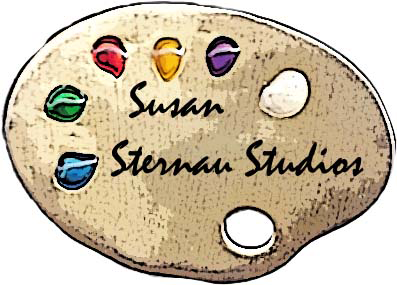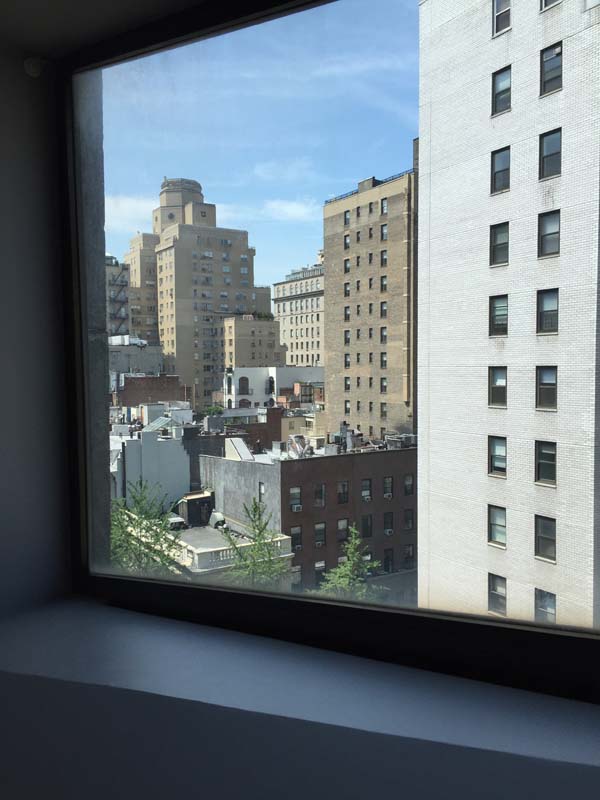Art Experience, Art Review
Unfinished at the Met Breuer
I was in New York recently, and had the opportunity to visit the new modern art collection of the Metropolitan Museum which is now housed in the familiar landmark building designed by Marcel Breuer. Once home to the Whitney Museum, the new Met Breuer at 75th Street and Madison Avenue is a great addition to New York’s stable of museums.
Unfinished: Thoughts Left Visible Exhibit
Unfinished: Thoughts Left Visible (on display through September 4th, 2016) was the show that occupied two floors of the Met Breuer when I was visiting. The exhibit showcases a collection of art, from the Renaissance to contemporary that was left incomplete by the artists for a host of reasons. Most of the works were unfamiliar to me. It seems logical that in their incomplete state, most had previously been tucked away in the Met’s cavernous basement storage areas under the Fifth Avenue building. Preview some highlights of the show with this short video.
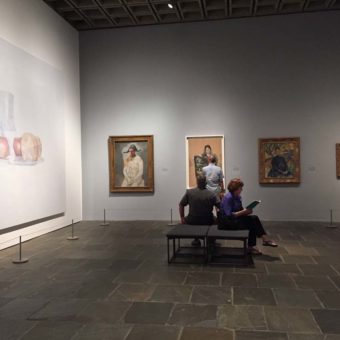
Unfinished Art
Artists who do not finish paintings or sculptures have not complete their work for a number of reasons. In a way, the reasons the unfinished works were abandoned become almost as interesting as the works themselves. If the reasons aren’t clearly spelled out such as death of the artist, or the sitter not returning for a portrait to be completed, they become part of the mystery story of the art piece. Also included in the exhibit are art pieces intentionally unfinished as part of a modern aesthetic that honors the artistic process. Rodin’s lyrical figures emerging from rough blocks of marble are the perfect example of this aesthetic that morphed into various forms of conceptual art.
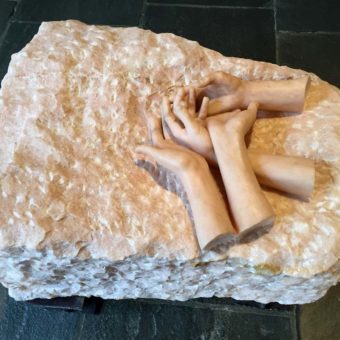
Bourgeois and Warhol
Louise Bourgeois continued this trend with a sculpture of twining hands carved from pink marble. Another example of work left intentionally unfinished is Andy Warhol’s partially completed paint-by-numbers canvas which is a play on a popular hobby pastime. Only about a quarter of the colors have been “filled” in. The rest of the painting is simply the outlines of numbered sections. At first the image doesn’t make any sense, but a prolonged gaze reveals the bottom half of a violin and a dish of red and green apples. The picture is headed in the direction of a traditional still life.
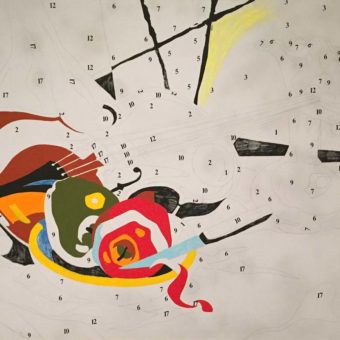
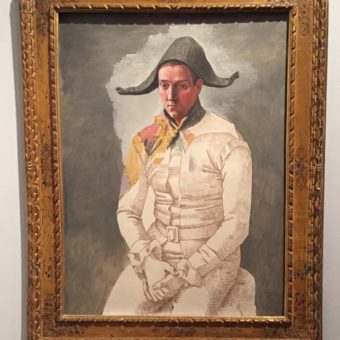
Picasso and Cezanne
Picasso’s Harlequin is so elegantly drawn underneath as preparation for painting, that the painting in of the face and figure seem almost superfluous. This work somehow seems beautifully complete, as though the Picasso was intentionally peeling back a layer of his creative process and letting us see within.
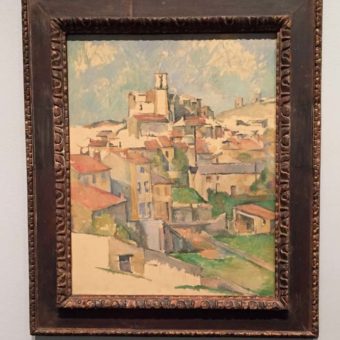
Cezanne’s unfinished view of a hillside town Gardanne gives me the feeling I have just walked into Cezanne’s studio. He has temporarily abandoned the painting on his easel for a long leisurely lunch but will resume working soon. It provides an intimate glimpse into Cezanne’s working method.
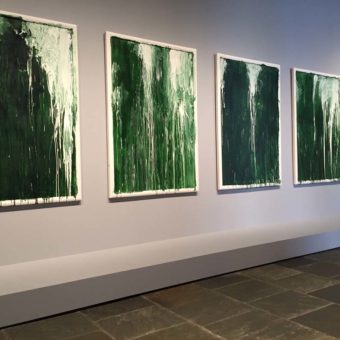
Cy Twombly
Twombly’s striking series; Untitled 1-VI (Green Paintings) conjures up a walk in the woods near the artist’s studio in Gaeta, Italy. The green and white paint of the canvases has dripped down the pictures and onto the frames (which must have been added before the paintings were begun). This is a reversal of the usual framing process. Usually a frame contains and seals the edges of a painting. Here it seem as though the painted forest is broaching the boarders and growing out of the frames.
The Met Breuer Experience
The exhibition is enhanced by the sparseness of the galleries. The stone-floored spaces are punctuated with an occasional large angular window. The windows framing selected views of Madison Avenue are often as much a draw as the art on the walls.
If you are in New York, the Met Breuer is definitely worth a visit. It also seems to have the advantage of being quieter and less crowded than the main Metropolitan Museum of Art and also the Museum of Modern Art. That makes for a more enjoyable visit!
